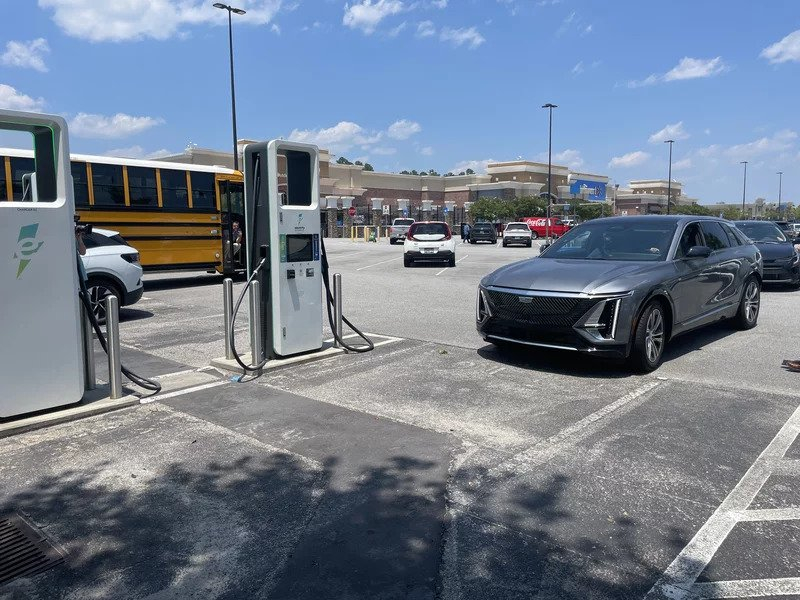Tesla's Super Superchargers
And then, of course, there are the Tesla chargers, which simply work better than the other chargers out there.
J.D. Power has found that Tesla drivers successfully charge at 96% of the Superchargers they visit.
Tesla invested in chargers as a way to sell cars, building fast, reliable charging stations where people would want them, regardless of whether the chargers could individually be profitable.
Tesla also defied the rest of the auto industry in using its own charging technology rather than the carefully negotiated industrywide standard.
Opening Up The Walled Garden
The strategy paid off. For years, Tesla kept its network of Superchargers as a walled garden. Tesla drivers raved about them, but no one else could use them.
That started to change this year when Tesla struck a deal with the White House to open some chargers to the general public. And the walled garden blew wide open after Ford announced it was adopting Tesla's charging technology. Future Fords will come with the Tesla-style plug, and starting in January, existing-Ford owners can buy an adapter and plug in.
The idea was born — where else? — on a road trip.
Ford CEO Jim Farley recently told NPR he was driving with his kids on a family vacation, past a huge, conveniently located Tesla Supercharger station. His kids wondered why Farley, who was driving a Mustang Mach-E, couldn't just stop there to charge.
Farley explained that they couldn't because those were Tesla chargers.
When he explained why they couldn't charge there, his kids were blunt, as
he recalled to NPR in an interview in August: "'Well, that's stupid. They have, like, a lot of free open spots there.'"
And the idea for the Tesla deal was born.
Other Private Sector Solutions
Ford's announcement kicked off an astonishing shift. In the weeks after, General Motors, Rivian, Volvo, Mercedes-Benz and Nissan all announced that they too were adopting Tesla's technology. This means that as soon as next year, the EV road trip experience could be dramatically different for non-Tesla drivers.
And then, in a separate surprise move this summer, seven legacy automakers — BMW, GM, Honda, Hyundai, Kia, Mercedes-Benz and Stellantis (formerly known as Fiat Chrysler) — announced they were banding together in a joint venture to launch a
new, as-yet-unnamed, charging network.
They plan to build 30,000 superfast 350-kilowatt chargers — even bigger and faster than the Supercharger network.
Meanwhile, existing companies like ChargePoint are clearly feeling pressure to fix their unreliable and underperforming chargers. ChargePoint just announced it's spending millions of dollars on a new operations center and other programs meant to "deliver near-100% charging reliability."



















